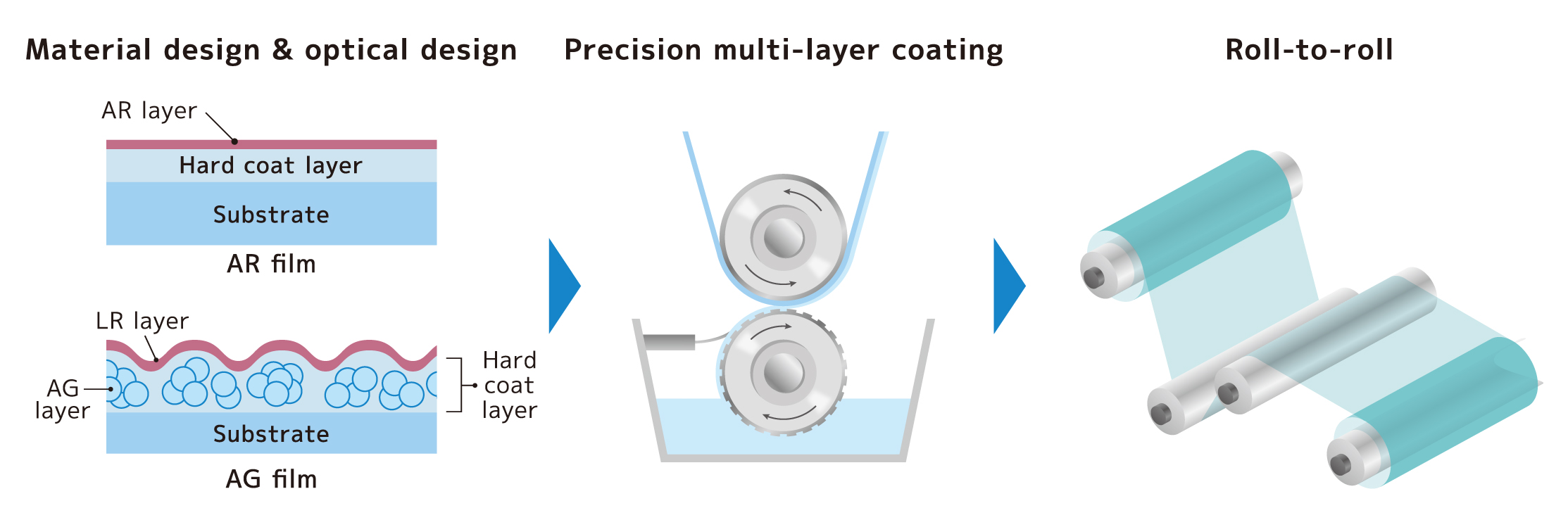Continuous formation of functional thin films on optical films
Thin Film Coating (Thin Film Formation) Technology
Thin film coating is a technology that creates a thin film layer on a base film substrate to impart various functions to the film. DNP is refining its "wet coating technology," which applies liquid to film substrates.
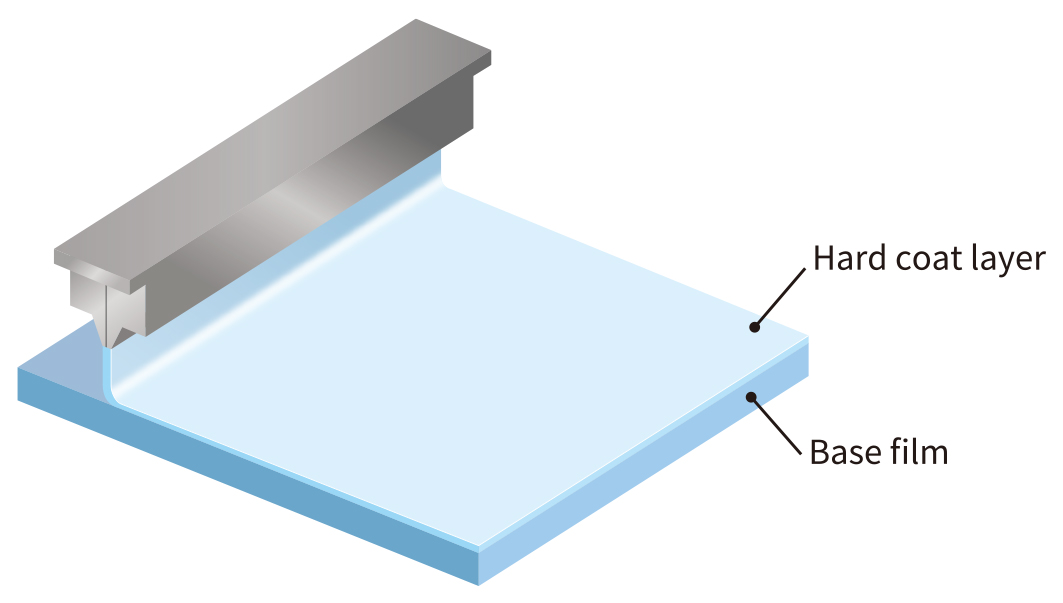
- What is thin film coating?
- Types of thin film coating
- DNP's thin film coating (thin film formation) technology
- DNP's optical film - strengths in manufacturing processing
- DNP's optical film
- For thin-film coating technology design, turn to DNP
- DNP in Electronics
What is thin film coating?
Thin film coating is a technology used to create a thin film layer on a base film substrate in order to impart various properties to the film. Thin film can be used to protect film surfaces or add a number of other specific features. DNP employs this technology to add various features to film, including AG (Anti-Glare) and AR (Anti-Reflection) features. In the case of optical film, the coating thickness is an important parameter that affects not only transparency but also reflectance and color. At DNP, it is possible to adjust the film thickness anywhere from nm to μm by using different coating methods, inks, drying conditions, etc.
Types of thin film coating
There are various types of thin film coating methods, but the three most common are "reverse coating," "gravure coating," and "slot-die coating." Different coating methods are used depending on the product, taking into consideration factors such as the coating liquid, film thickness, and production speed. DNP enables high-speed coating by optimizing the ink design, nozzle, and roll shape for each coating method.
Reverse coating
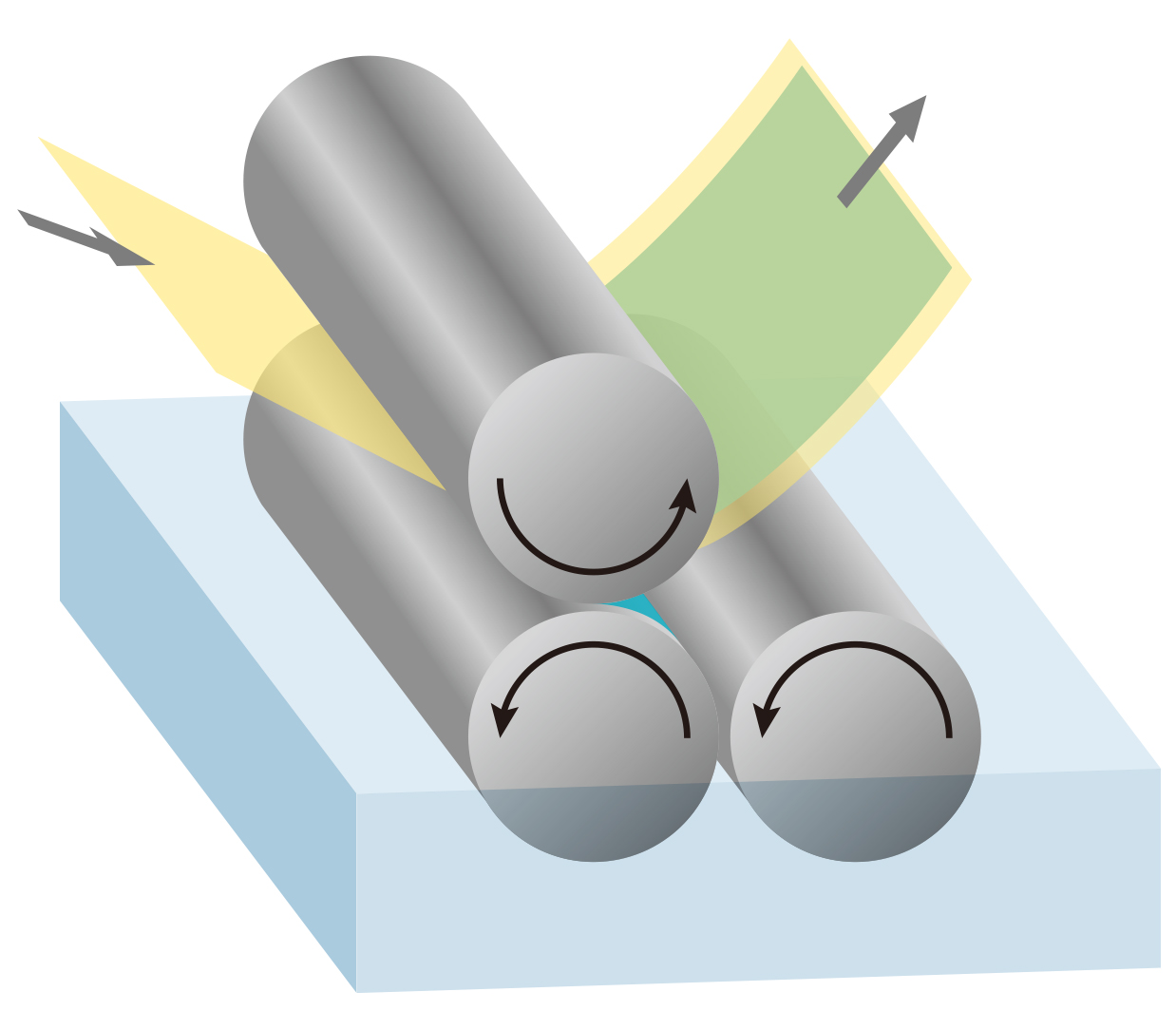
|
|---|
In the reverse coating method, the coating liquid is applied to the film being conveyed by rolls rotating in opposite directions. This method allows for the production of very thin films and the use of various types of coating liquids. The film thickness is determined by the gap between the two rolls and their speed, so it is important to ensure accurate rotation and clearance during assembly.
Gravure coating
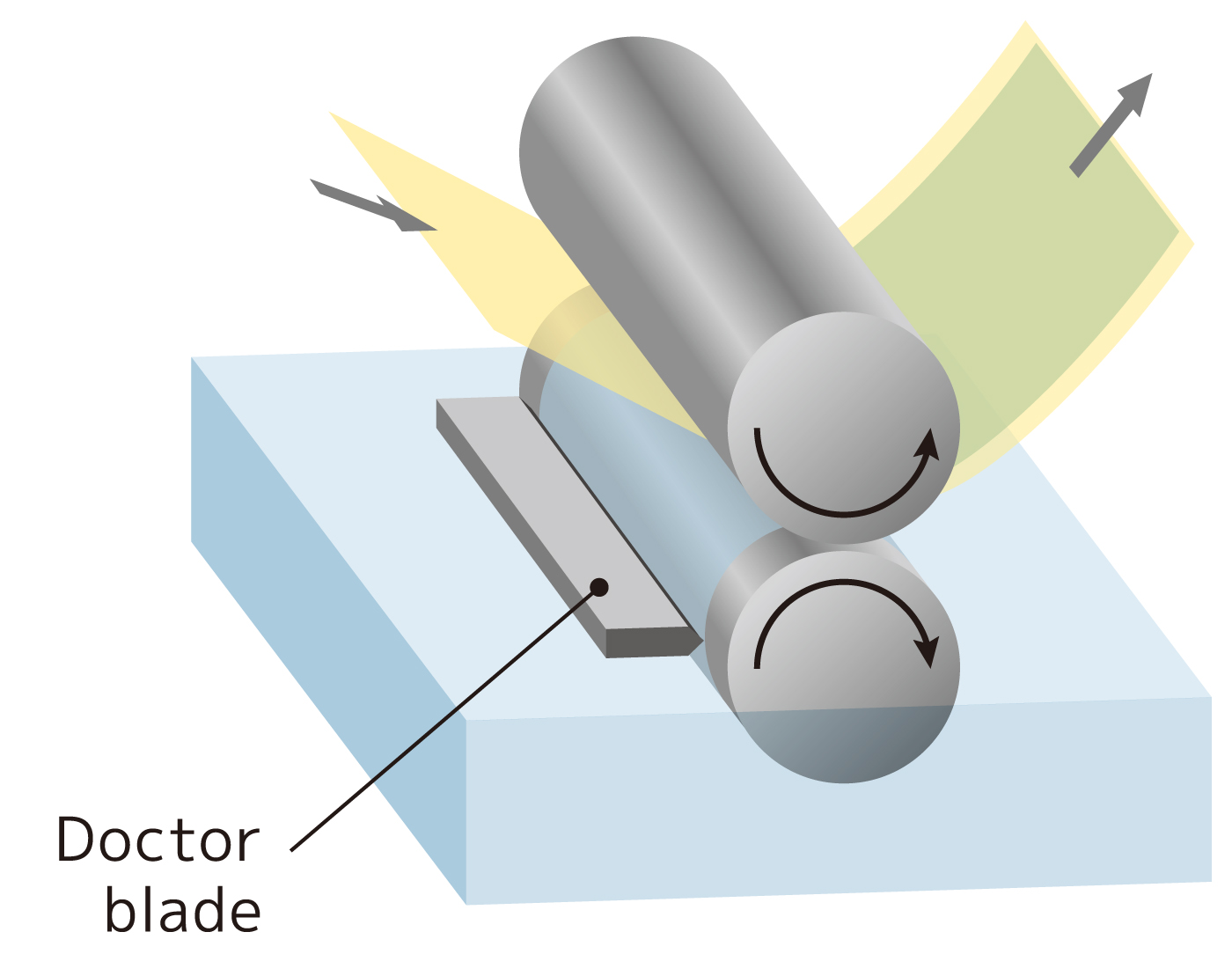
|
|---|
In the gravure coating method, the coating solution is applied to the gravure roll (intaglio-engraved roll), and excess coating solution is scraped off with a doctor blade to adjust the coating volume. Similar to reverse coating, the rolls are rotated in the opposite direction to the film being conveyed, so the rotation speed ratio adjustment has a significant impact on film thickness and quality.
Slot-die coating
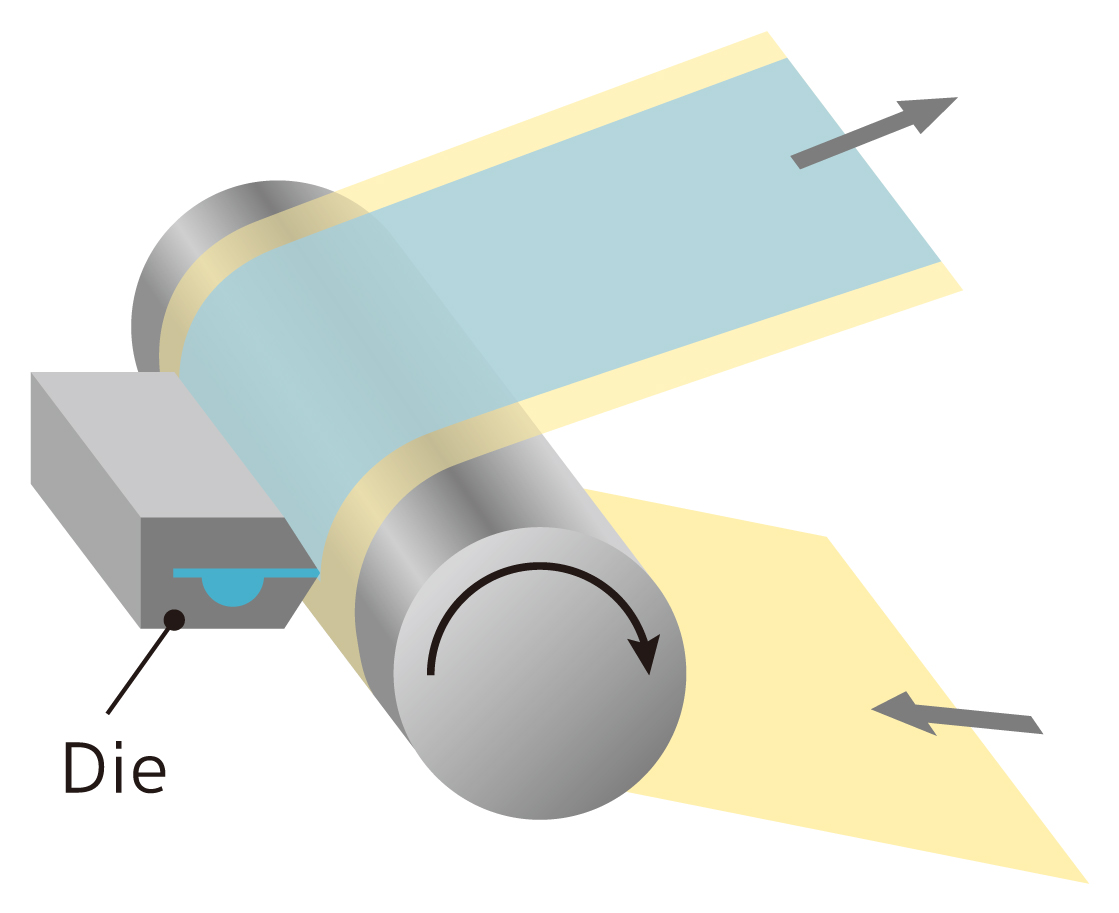
|
|---|
The slot-die coating method involves supplying the coating liquid through a die nozzle that extrudes ink in a slit-like pattern. Since only the necessary amount of coating is applied, the process conditions are easy to control, making this coating method highly efficient. Additionally, since air is not mixed in, coating defects known as pinholes can be minimized. This method is suitable for coating liquids that deteriorate due to agglomeration or other causes, as the coating liquid is not circulated and only the amount sent by the pump is used.
DNP's thin film coating (thin film formation) technology
Among the technologies for coating thin film on film substrates, DNP specializes in "wet coating technology," in which a film substrate is coated with a liquid mixed with a material that imparts properties.
The process involves
1. Dissolving or dispersing materials such as resins and particles in a solvent
2. Coating the dissolved or dispersed liquid onto the film substrate
3. Forming a functional thin layer on the film after drying and curing the solvent
DNP combines wet coating technology with a roll-to-roll process for mass production of optical film.
DNP's optical film - strengths in manufacturing processing
At DNP, we have a wealth of expertise in optical film design and manufacturing above and beyond thin film coating technologies.
|
|
Optical design
DNP leverages its accumulated optical design expertise to optimize properties like transparency, reflectance, and contrast for optical films. Additionally, various functions such as hardness, anti-scratch, adhesion, durability, and antistatic properties can be added according to customer's requirements.
Material design
Careful consideration of ink material design is vital. To avoid issues like ink repulsion, uneven thickness, or insufficient hardness, the ink's physical properties and characteristics, like viscosity, need attention. DNP crafts its own inks, ensuring high-quality lamination and swift development of film products meeting even complex demands like multi-layer coating.
Inline multi-layer coating
The inline multi-layer coating technology is essential for delivering high-performance, top-quality optical films like AR/AG films at affordable prices. With multi-layer coating capabilities of up to three layers, DNP can mass-produce optical films boasting features such as anti-glare, contrast enhancement, anti-static, hard-coating, and low reflection.
Ultra-wide coating
Available in 2500mm width
DNP's production lines accommodate up to 2500mm width, meeting the demand for larger LCDs. While maintaining uniform coating thickness on wider products poses challenges, DNP's advanced processing technology ensures even coatings.
High quality even with mass production
For mass-produced wide optical films, DNP employs the roll-to-roll process, achieving high productivity alongside advanced quality via meticulous process technology and defect-detecting inspection machines.
Manufactured in a clean environment (cleanliness)
The functional layer of optical film is thin, ranging from several hundred nm to several microns in thickness, and strict quality control is required as the presence of even the smallest dust particles can result in defective products. DNP manufactures optical film in clean rooms with strict entry control everywhere from unwinding to winding, and maintains a high level of cleanliness, especially in the coating and drying processing equipment.
Drying technology
In the production of thin film coating, the drying process is just as important as the coating process. Since the optimum drying speed differs between the early and late stages of drying, DNP divides the drying rooms into multiple zones and controls the temperature and air flow of the hot air in each zone to set the optimum manufacturing conditions.
As a result, quality (optical and appearance characteristics) can be stabilized across the entire surface of the roll, making it possible to provide high-quality optical film.
DNP's optical film
Anti-reflection film(AR film)
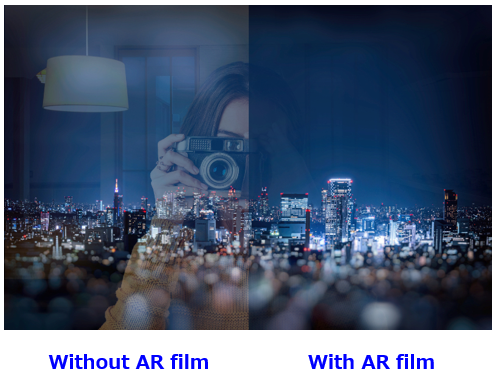
|
|---|
AR film, and LR film(Low-reflection film) are optical films with an anti-reflection layer. By taking advantage of light interference at the AR layer, reflected light can be reduced on a screen, and its transmittance can be improved.
AR film reduces the effects of ambient light on display screens and allows them to be seen more clearly.
Anti-glare film(AG film)
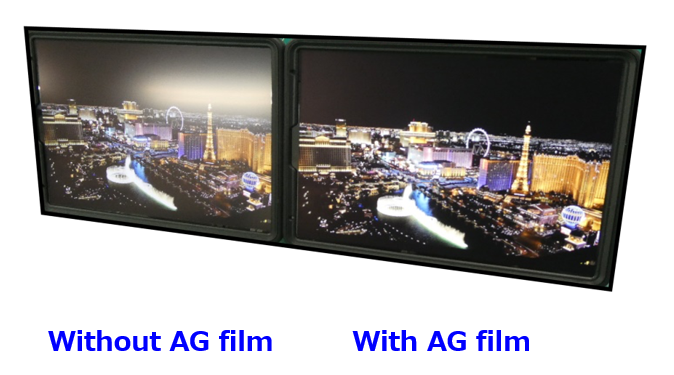
|
|---|
AG film reduces outside light reflection by diffusely reflecting incident light on an uneven surface, distinct from AR film utilizing light interference. AG film uses a hard coat layer with deposited particles on the base film to achieve its effect, unlike AR film which relies on light interference. These films can even be combined for further reduced ambient light reflection.
For thin-film coating technology design, turn to DNP
DNP possesses extensive know-how in the design and manufacturing of functional films utilizing thin-film coating technology. Please feel free to consult us.
DNP in Electronics
|
|
Other than listed above, DNP’s Electronics segment has a wide range of products for digital interface (display-related) and semiconductor.
You can check further our product line-up here and find anything to accommodate your needs.
